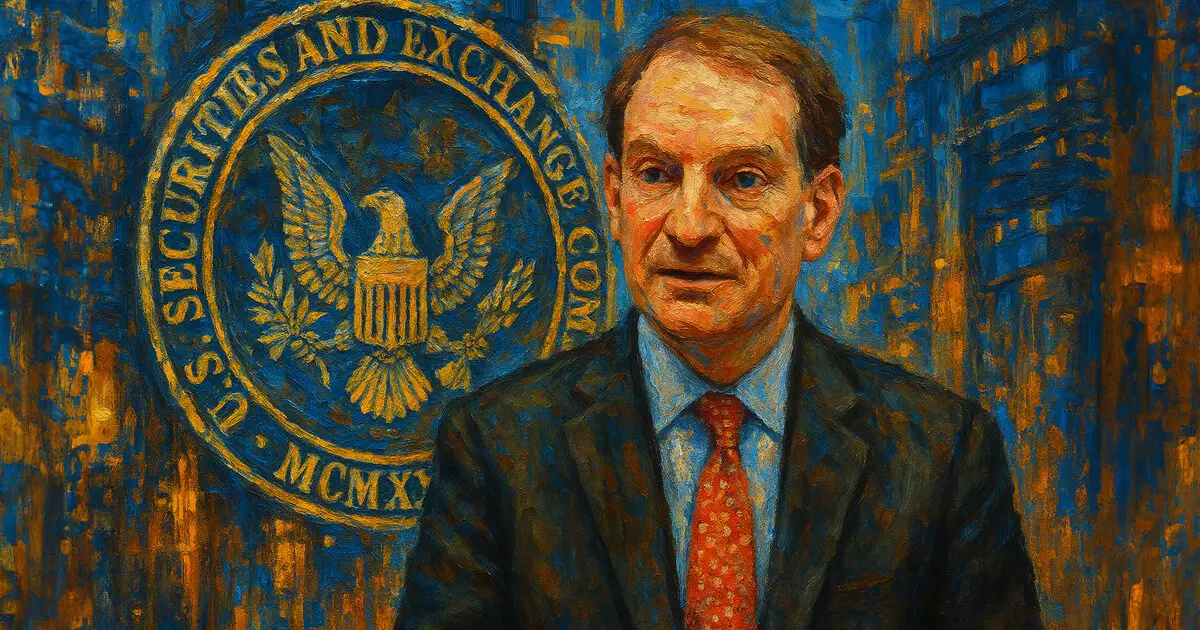The U.S. Securities and Exchange Commission (SEC) has embarked on an ambitious mission branded as “Project Crypto,” an effort ostensibly designed to adapt the nation’s financial regulatory framework to the rapidly evolving blockchain ecosystem. However, lurking beneath the surface is a fundamental tension: will this initiative deliver a much-needed update that positions America as a leader in on-chain finance, or will it suffocate emergent innovations with bureaucratic red tape? As someone who advocates for a balanced but proactive approach toward technological progress, I am increasingly skeptical that the SEC’s heavy-handed tactics might actually harm, rather than help, the country’s prospects in maintaining a competitive edge.
While the SEC Chair Paul Atkins emphasizes outcomes like clarity, investor protection, and market integrity, one must question whether these goals are aligned with the aggressive fostering of blockchain-based finance. His assertion that “most crypto assets are not securities” is a recognition of the technological distinctions that exist in this space—yet the SEC’s traditional toolbox of regulations, designed for legacy assets, risks stifling the very innovation it claims to support. The challenge isn’t simply about classifying assets or establishing exemptions; it’s about whether the regulatory environment will cultivate a fertile ground for entrepreneurs and investors willing to take risks on revolutionary financial models, or whether it will impose limiting conditions that push innovation offshore or into shadow markets.
Balancing Regulation and Innovation: A Delicate Dance
The initiative’s focus on creating exemptions, carve-outs, and safe harbors indicates an understanding that overregulation can choke progress. Yet, the notion of “clarity” can quickly morph into ambiguity if regulators lean too heavily on interpretive guidance that can be arbitrarily applied. The concern isn’t just about current policies like SAB 121 or the idea of a “Principles-Based Innovation Exemption,” but about whether these frameworks constitute meaningful reform or window dressing for a regulatory environment that remains uncertain and unpredictable. If the SEC’s goal is to bring tokenized securities back onshore, it must walk a tightrope—too much regulation will push innovation to more accommodating jurisdictions; too little, and investors’ interests become vulnerable to fraud or mismanagement.
Furthermore, the idea of broker-dealers updating custody regulations to include crypto, and needle-threading the path for platforms to offer both securities and non-securities trading under one license, aims for efficiency but potentially complicates the regulatory landscape. It raises questions about enforcement, oversight, and whether existing regulators have the expertise to properly monitor and enforce rules in a space characterized by speed and complexity. A centralized, overly prescriptive approach risks creating a system fragile enough to break rather than foster adaptive, resilient blockchain markets.
American Values or Regulatory Overreach?
Self-custody is hailed as “a core American value,” yet, paradoxically, the SEC’s push toward regulatory integration suggests a move toward increased oversight—potentially threatening the ethos of individual autonomy that has long defined American innovation. The push for compliance standards like ERC-3643 and other technical standards might serve to standardize and legitimize crypto activity, but they could also serve as barriers barring smaller start-ups from entering or thriving in the market.
The underlying question remains: is the SEC genuinely seeking to forge a sustainable path forward that encourages innovation while maintaining safeguards, or is it merely wielding its existing authority to reshape the space according to its conservative, legacy-driven perspective? The answer will significantly influence whether the US remains a global leader or simply an observer as other jurisdictions like Singapore, Switzerland, and Dubai forge ahead with more flexible and supportive regulatory environments.
In its current form, Project Crypto appears to be an exercise in controlling the narrative, ensuring that the United States remains at the forefront of digital finance—not by leading through innovation, but by attempting to contain it. While the intentions may be rooted in protecting investors, the potential downside is a missed opportunity: a chance for the US to embrace innovation responsibly, creating a regulatory environment that’s both safe and enabling. If the SEC’s heavy-handed approach persists, it could well be the 21st-century equivalent of missing the boat—a setback that diminishes American ingenuity and economic influence for years to come.

